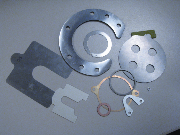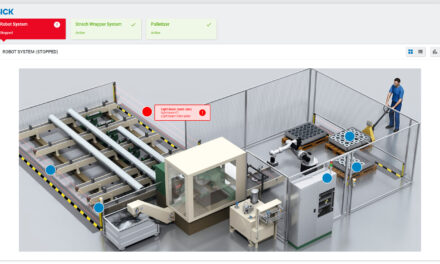 SPIROL has several manufacturing methods that eliminate or greatly reduce tooling expenditure. Shim tooling costs are one of the quickest ways to drive a prototype or short-run production project over budget. Fortunately, SPIROL has several manufacturing methods that eliminate or greatly reduce tooling expenditures. Whether a project is for prototype, short run or long term requirement, SPIROL has a solution to minimize the installed component costs by controlling tooling costs.
SPIROL has several manufacturing methods that eliminate or greatly reduce tooling expenditure. Shim tooling costs are one of the quickest ways to drive a prototype or short-run production project over budget. Fortunately, SPIROL has several manufacturing methods that eliminate or greatly reduce tooling expenditures. Whether a project is for prototype, short run or long term requirement, SPIROL has a solution to minimize the installed component costs by controlling tooling costs.
SPIROL’s production technologies that are used to manufacture shims, together with their advantages are:
SWAT (Stamping Without A Tool) is SPIROL’s proprietary stamping process that produces burr-free thin metal parts from 25 microns to 0.25 mm (.001” to .010”) thick with simple or complex shapes. SWAT is ideal for aluminium, brass, steel or stainless steel parts. It is also ideal for dimensional repeatability and low volume production. SWAT can produce parts from 25 mm to 530 mm (1” to 21”) in diameter and the process is suitable for production runs in the 10 to 3,000 part range.
With CNC Laser Cutting, SPIROL utilises two lasers that provide a great alternative to tooling for unique configuration parts, short runs and prototypes. Thicker parts from 0.25 mm to 6.40mm (.010” to .250”) thickness can be produced with CNC controls that ensure precise accuracy throughout the entire run. Laser cutting is suitable for aluminium, brass, steel and stainless steel. SPIROL’s lasers can accommodate parts up to 1,200 x 2,400 mm (47” x 95”). Indeed, SPIROL’s laser cutting process is good for any quantity of parts.
CNC High-Speed Profile Cutting. SPIROL’s CNC machining centres produce precision solid or laminated parts with superior edge quality. When used on laminated shims, there is no separation of laminations from stamping shock and the layers are easy to peel. CNC High-Speed Profile Cutting is ideal for odd configuration laminated parts from 0.30 mm to 6.40 mm (.012” to .250”) thick. Parts from13 mm ( .500”) diameter to 380 x 585 mm(15” x 23”) can be produced. SPIROL’s High-Speed Profile Cutting is best for production runs of 1 to 500 pieces.
Operational Set-up and OD/ID Combo Tooling. SPIROL has accumulated thousands of common “free-float” and combo tools, capable of producing one and two hit special-dimension washers and OD/ID parts. Operational set-up utilises standard tools to produce a two-hit washer or OD/ID part. OD/ID combo tooling produces a wide variety of special dimension washers with one-hit. OD/ID combo tooling is the preferred method when statistical capability is a criteria.
For products with a long life cycle, one-hit Compound Tooling will guarantee product quality and repeatability over the life of the tool. SPIROL’s die shop produces quality tools at competitive pricing utilising the latest CNC and EDM production technology. Compound tooling is ideal for long run parts with complex configurations.
Knowing whether Tool-Less Technology or tooling is the best approach is important. Tool-Less Technology is almost always the most cost effective solution for prototype and short run shims. But, as quantities and project life expectancy increase, there is a point where tooling may be the preferred method.
A simple formula to determine which method is best for each project is highlighted here, but it is important to calculate the quantity of parts needed over the lifetime of the project:
Tool-less Technology part: (quantity x piece price) = total cost vs. Tooled part: (quantity x piece price) + (tooling cost) = total cost
Whichever results in the lower total cost will usually be the best choice. SPIROL’s cost estimating staff can analyse potential production methods to determine which is the best based on the life expectancy of parts and volume requirements.
For more information, visit www.spirol.com or contact Spirol Industries Ltd, Princewood Road, Corby, Northants, NN17 4ET, Tel: +44 (0) 1536 444800, Fax: +44 (0) 1536 203415, email: uksales@spirol.com

